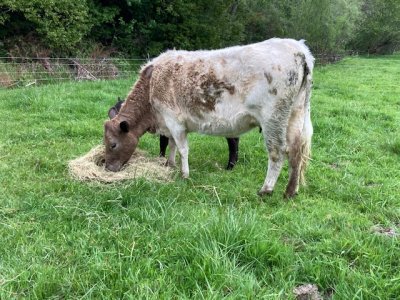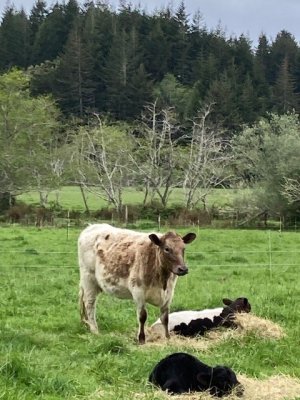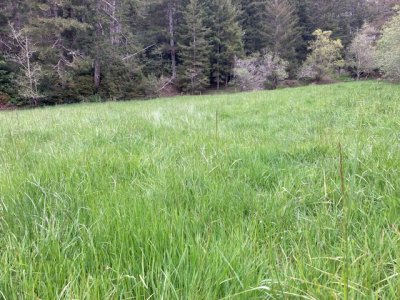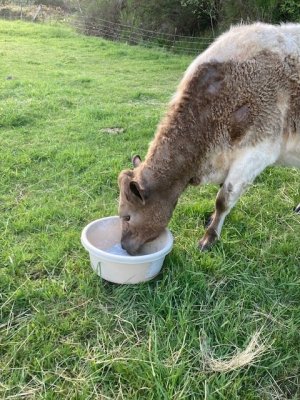Haven't put any fertilizer on for 5-10 years.
Have never tested soil.
Quite a few years back I started having problems with cow(s) getting sick in that pasture, along about March. Started pulling them out the end of February, didn't put them back in till April or later, problem solved.
Had extension agent walk the pasture, it would have been later than March, she said she could not see any plants that would pose a problem.
This cow was pulled out of there the middle of February, went back into the pasture about 2 weeks ago.
The grasses(?)

Probably a blend of Orchard Grass, Fescue, Rye Grass, some clover and native grasses. After I cross fenced and started rotating, later in the summer Lotus Major kicks in.. Only toxic plant in there is a little Tansy Ragwort. Only way cattle eat that is if starved to it.
The other two cows seem fine. This cow is young, turned 2 in March. Was under weight when she calved, healthy by all appearances. But she had no reserves to give her any cushion against getting sick.
Not sure how to help her gain weight without risking doing more harm. Hope to find a vet willing to do a fecal to rule out any other problem(s).
 is very dominating. I really like the heifers hair-do. Her yearling half sister (from the same Murray Grey bull) has the same hair-do.
is very dominating. I really like the heifers hair-do. Her yearling half sister (from the same Murray Grey bull) has the same hair-do.




